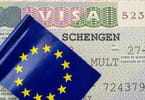The European Union is a major destination for illegally smuggled live snakes, lizards and tortoises from southern Africa, posing a serious threat to their conservation. Wealthy EU citizens are big collectors of rare reptiles, with one tortoise openly offered for sale at R35 000.
Most of the species are protected by South African or Namibian legislation. They may not be removed from their natural environment but once they reach Europe the trade becomes legal as there is no legislation outside southern Africa protecting them according to a report released by the German organization, Pro Wildlife.
Protected nationally but not internationally
Southern Africa has the richest reptile diversity in Africa, which currently comprises of almost 500 species, almost double that of the Congo basin. What’s more, southern Africa’s reptile fauna has a very high level of endemism – almost 80% are only found here and nowhere else in the world.
“Due to this fact,” says Michael Adams, a herpetologist at The Biodiversity Company, “many of our reptile species then become targets for the illegal pet trade.”
Unfortunately, even though many of the reptilian species are threatened or endangered, they tend to be overlooked in global conservation plans. According to the Southern African Reptile Conservation Assessment (SARCA) this is due, in part, to the fact that available information is incomplete and not easy to access. Existing distributional information for the region’s reptiles has not been adequately collated and integrated into a single database.
As a result, many reptiles from South Africa are not protected by the Convention on International Trade in Endangered Species of Wild Fauna and Flora (CITES) and therefore are also not protected under EU law.
“Because these species are not covered by CITES or the EU Wildlife trade regulation, there is currently no legal basis enabling authorities to act against this kind of wildlife trafficking,” says Dr Sandra Altherr, a biologist at Pro Wildlife specialising in small reptiles. “The illegal traders achieve high prices in this trade without having to fear any penalties after leaving the country of origin.”
Big Business
The reptiles, like the giant girdled-lizard (or Sungazer), the many-horned adder, the side-winding adder, as well as a range of geckoes and tortoises, are mostly rare with a very small distribution range, which makes them highly prone to over-exploitation.
Their rarity is reflected by the prices they fetch for the pet-trade in Europe, which is typically around R8,000 to R10,000 per animal. One extremely rare Kalahari tent tortoise (Psammobates oculiferus) is currently up for sale for over R35,000.
“Typically what happens is the more rare a species is the more value collectors find in them,” says Adam who adds: “Unfortunately in South Africa it is relatively easy for smugglers and poachers to find particular animals if they know where to look, and also relatively easy to smuggle them out of the country. Often reptiles are simply put in boxes and posted or couriered all over the world.”
Adams says that over a four year period he received dozens of confiscated reptiles from OR Tambo, “but it is my personal impression that only a tiny percentage of smuggled reptiles were being discovered at the airport.”
“European citizens are among the main clients of smuggled reptiles,” says Altherr. “Once they reach the EU, they are openly sold on markets and pet-trade fairs.” Altherr says the dealers prefer pregnant females. “It enables them to offer ‘captive-bred’ offspring a few months later.”
The traders, mainly from Germany, Slovenia and Russia, create special online platforms and Facebook groups with the physical hand-over mostly done at European reptile trade shows such as last weekend’s exhibition in Hamm, Germany, the largest reptile trade fair in Europe.
According to Altherr, some dealers prefer not to have dedicated stands at the fair, since the fair prohibits the sale of venomous snakes, so they rather exchange the reptiles carried in their backpacks in nearby hotels.
Call to change EU legislation
Altherr points out this gap in EU legislation has been acknowledged in reports and documents from the European Commission, the United Nations Office on Drugs and Crime (UNODC) and others, but measures to tackle it at EU level have not yet been put in place. “New EU legislation to address this loophole is clearly needed,” she says. “This could be modelled on the US Lacey Act, which provides a broad range of protections to any plant or species illegally harvested or taken in its country of origin.”
“Based on our observations of the European pet market,” she says, “we would strongly recommend the EU to pass legislation which would make import, sale, and possession of stolen wildlife illegal.”
WHAT TO TAKE AWAY FROM THIS ARTICLE:
- Altherr points out this gap in EU legislation has been acknowledged in reports and documents from the European Commission, the United Nations Office on Drugs and Crime (UNODC) and others, but measures to tackle it at EU level have not yet been put in place.
- “Because these species are not covered by CITES or the EU Wildlife trade regulation, there is currently no legal basis enabling authorities to act against this kind of wildlife trafficking,” says Dr Sandra Altherr, a biologist at Pro Wildlife specialising in small reptiles.
- According to Altherr, some dealers prefer not to have dedicated stands at the fair, since the fair prohibits the sale of venomous snakes, so they rather exchange the reptiles carried in their backpacks in nearby hotels.






















